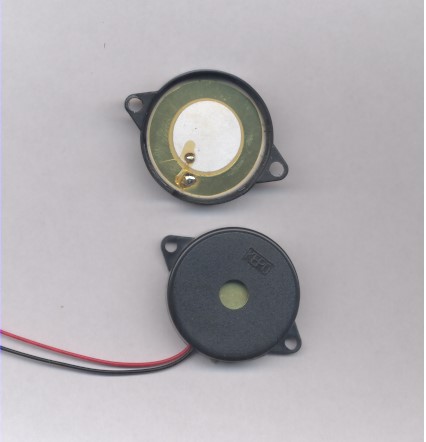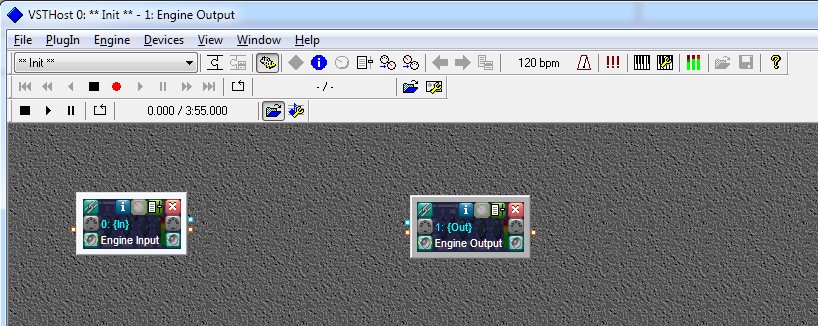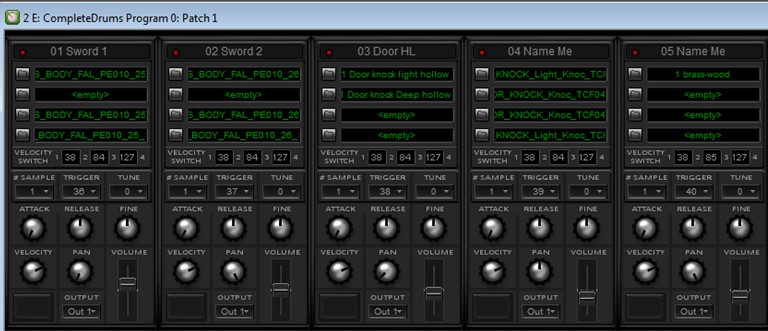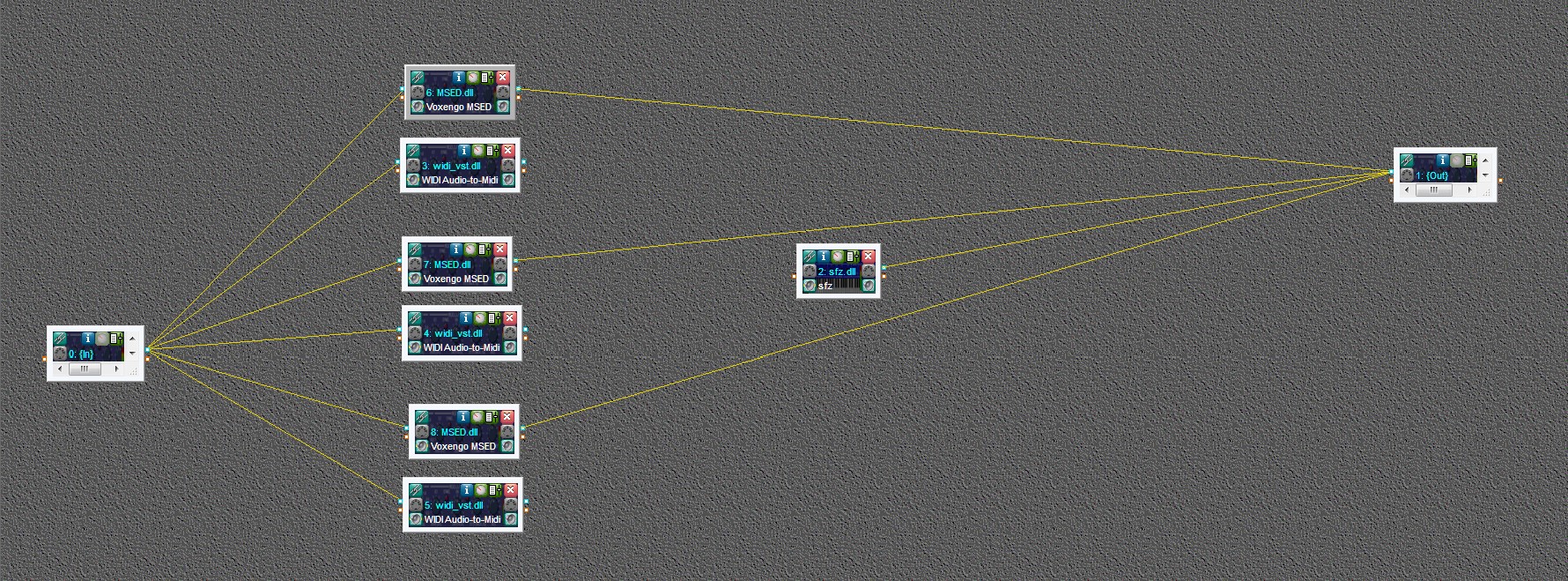
|
Michael Drolet -- 2012 |
| Home | "Three Witches" |
| |
|

|
Michael Drolet -- 2012 |
| Home | "Three Witches" |
| |
|
| It
used to be if you wanted to add 'processing' or 'effects' to a sound,
you had to use a dedicated piece of hardware called an effects
(fx) processor. These would usually handle only one sound each, so if
you wanted more than one effect simultaneously, you had to have multiple
fx processors. Of course, in software like Audition, it was possible to apply one or more fx to a given sound, but this wasn't practical in real time -- i.e. during performances. Computers and related software just weren't fast enough to handle real-time processing. You would have to pre-render the sound with the effect included. For "Three Witches" Skyler wanted to have many different sounds with differing effects playing at once. We decided to try out a freeware program called "VSTHost" to run the effects in real-time. |
|
| To
make the sword battle between Macbeth and Macduff more powerful, we
wanted to trigger the sounds of clashing swords (with lots of reverb) by
fitting piezo electric sensors or triggers to the plastic swords. When the porter knocks on the main castle door which is made of luan, we wanted to trigger a more guttsy castle door sound. So we fitted the door with sensors as well.  These
are actually used as buzzers in smoke detectors and alarms, but they
can be used to pickup sounds. They are especially good at picking
up impacts and are inexpensive -- $0.89 each at Maddison or Access
Electronics.
|
|
|
|
|
 |
|
| When you open 'VSTHost', you're presented with two system blocks, an 'Input Engine" and an 'Output Engine'.
These are how sounds get into and out of the program. You build
one or more processors, by chaining other blocks, called 'plugins'
between the input and output. |
|
| Below,
we've added a drum trigger plugin 'Complete Drums" and a reverb plugin
called 'Old Skool Reverb' to the chain. Striking the door or
clashing the swords will trigger the appropriate sound and add reverb to
it. By separating the path of the triggered sound from the
reverb, we can adjust the balance between the 'dry' and 'wet' effect. |
|
 |
|
| This is
the screen that allows us to choose what sound(s) will be triggered by
each of the sensors. In fact, each sensor can trigger one of four
sounds depending on the force with which it is struck. Soft door knock for a soft tap, thundering door knock for a very aggressive knock. Same with the swords, if they just touch we can trigger a scraping sound. If they strike really hard, we can trigger a full clash. Originally, the sword triggers were hard wired, but this proved impractical for Macbeth because of a quick change, so we connected his sword to a wireless belt pack. |
|
 |
|
|
|
|
| A
one point in the play we are confronted with three other-worldly
'Apparitions'. We miked each with a wireless beltpack and processed
their voices through 'VSTHost' as well. |
|
To do
this, we built a chain which consisted of a plugin 'widi' which analyzes
each voice for pitch and intensity and generates a MIDI signal
for each voice. The MIDI signal is then passed to a synthesiser
plugin 'sfz' which synthesizes (generates) a different character voice for each. The intensity of the 'thunder' is controlled by the loudness of the Soldier's voice and the pitch of the 'thunder' by the pitch of her voice. Again, we arranged a 'dry' and 'wet' feed so that we can adjust the balance between the apparition's natural voice ('dry') and the effected voice ('wet'). The plugins labelled 'MSED' allow us to control the 'dry' feed. |
|
 |
|
|
|
|
| Each
chain can be assigned a different 'preset' called a 'performance' and
each 'performance' can be recalled by a MIDI command issued by a Control
Cue in SCS on the other computer. We added one 'performance' which did
nothing at all. It was used to mute all of the inputs and outputs
of 'VSTHost' until needed. This was to eliminate any spurious
triggers or apparition voices. |
|